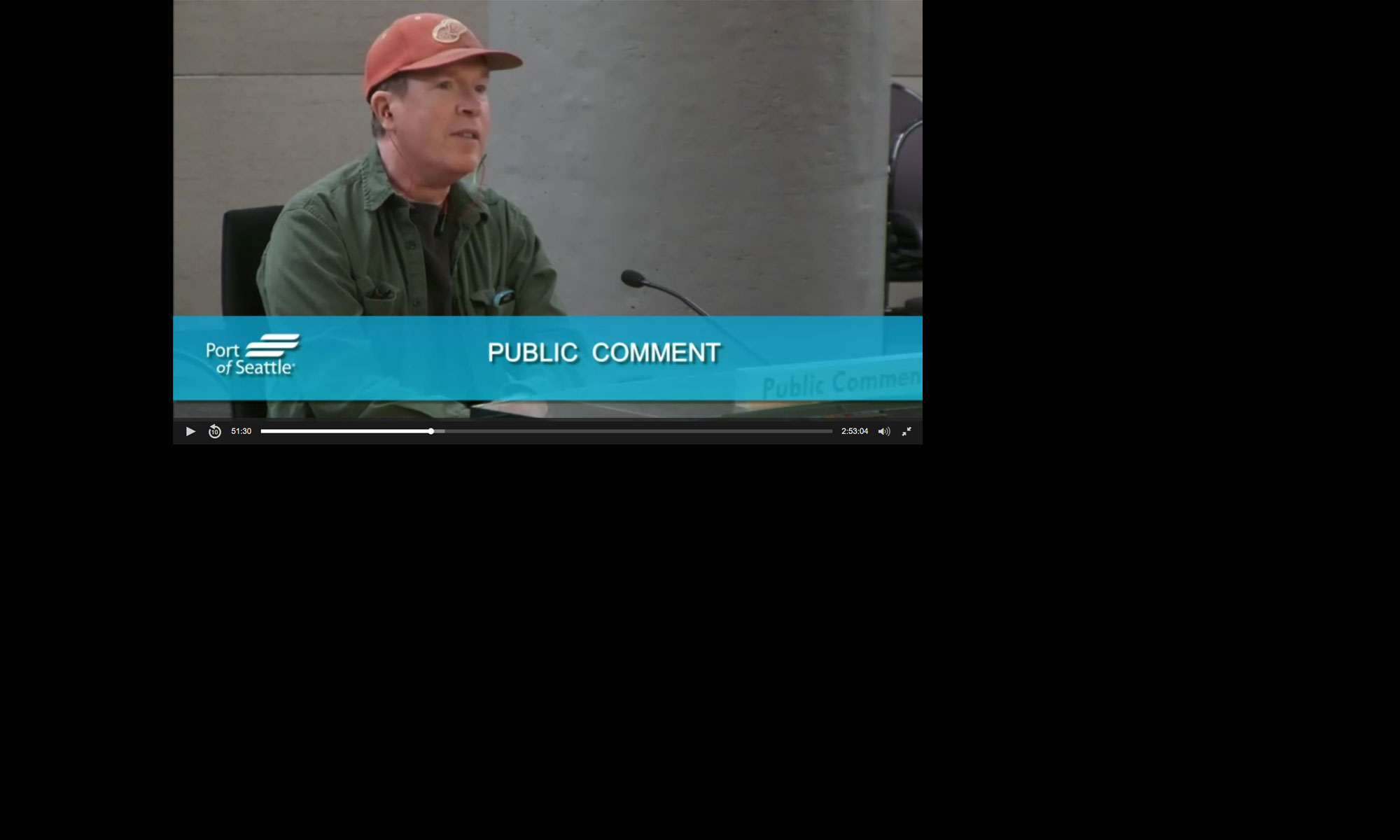Said it before, say it again: The vote at the July 9 2020 City Council Meeting to demolish the Van Gasken House breaks my heart. The City’s presentation was indeed a presentation; a sales presentation, designed to distract the public from the fact that they had intended to demolish the place all along. And they did it by making a bunch of really misleading and exaggerated arguments about the cost of keeping the place and how little intrinsic value it has for this community. The public deserves objectivity and transparency. And once again, they did not get it. And yeah, I’m mad about it.
This is a long post, mainly because the meeting presentation was basically six against one and there was almost no time to rebut all the blather. Just skip down to the Talking Points section for a quick rundown, then read the rest for more depth.
The original deal
Now when Forterra loaned us the money to purchase the property back in 2017, everyone (including me) thought it was a fantastic idea. I think everyone was also under the assumption that the house would be preserved along with the property. However, we were told that there was some urgency to the financing because it was a three year loan.
So it was quite surprising when the City came up with a way to pay the note back early. This was seen as another example of the excellent financial management we were now experiencing. From financial catastrophe to early pay-offs in less than two years!
Bad faith
However, I object to the way the City paid off the loan. $300,000 of that re-payment money was a State grant that required the City to tear down the home. And then, after already destroying the landscaping and making the place look like absolute hell, the City applied for another $500,000 grant from the same State Agency in order to redevelop the property!
The moment the City applied for that first State grant it knew the house had to come down. Rather than be patient and use the full three years it had to search for ways to repay the initial loan and keep the house, it rushed to get repayment money as quickly as possible–and thus doomed the house.
Think I’m being too harsh? Ask yourself this: Did the City ever call out to any of our very generous local foundations or to the community at large for partnerships in saving the house? I received contact from three County organizations who said that they had never been approached by the City for funding when the property was originally purchased. Typically when there is something beloved in a community that becomes at risk, the public is engaged to find solutions. That never happened. We now have several successful renovation projects under our belts that have been funded in just this way. So the public should have had a chance to weigh in on the issue, understand the urgency and be able to help save the home.
We saved it from the condos!
One argument I heard made over and over at the meeting was, “Maybe we’re losing an iconic house, but at least we prevented another condo!” This is a joke. Yes, the property was zoned as multi-family. But stop and think for a minute: who exactly controls zoning in this town? The State? No. The County? No. The Russians? 😀 No. Your City Council, that’s who. At any time, the City Council could have had the foresight to re-zone various parts of the downtown for better purposes.
Unfortunately, the reason the entire downtown ‘went condo’ starting in the 70’s was because your City Council over and over has decided to let that happen. The idea of giving up the best parts of the city for multi-family units could only have seemed like a good idea in a place that has no concern for long-term planning. It was quick, one-time money.
We could have, at any time, had the foresight to rezone the Van Gasken property to make sure it would be preserved. We didn’t. We lacked vision. That’s on us. As with the grant, even more we painted ourselves into a corner.
So to say, “We saved the place from going condo!” is a bit rich.
It’s not really historic
OK, fine. How do you define historic? George Washington slept there? Harriet Tubman was born there? The Battle Of Des Moines was fought there? (I may have made that up. 😀 ) If any of those were a requirement, none of Capitol Hill would be preserved; none of Tacoma’s older neighborhoods would be preserved. Most of the time, people preserve and refurbish old homes simply because they treasure the look (the aesthetic argument).
Having been built in 1889 (the same year Washington became a State), the simple fact is that the Van Gasken House is one of the oldest standing structures in the entire State Of Washington and certainly one of the first built in Des Moines. The history of the house gives people today a great idea of what life was like here for the original settlers.
Aesthetics?
Frankly most of the arguments come down to aesthetics. (And I’ll bet a lot of people just made up their mind seeing the word ‘aesthetics’ 😀 )
You either think the place is cool and special. Or you don’t. Some of that is generational. Some of it is where you were brought up. Frankly, here on the West Coast, we have less interest in history. Unless you’re Native American, there isn’t much stuff to ‘preseve’. We tend to like ‘new’ out here, at least partly because the entire area is only 130 years old.
Yes, but it’s been updated too many times!
We were told that the home was not historic because it had been ‘updated’. That is a pre-condition that does not exist in many parts of America for a very good reason: it doesn’t make sense. Why? Because–news flash–people actually live in houses! Most the remaining really old homes throughout America have been updated with extravagances like furnaces and linoleum and copper plumbing and… wait for it… electricity. Woooooh. 😀
You can’t expect people to live in a 100 year old home and keep it ‘vintage’ like it was a Model-T or old comic book. It’s not a ‘collectible’, it’s a house. Planning committees in cities all across America understand this basic reality. And home restorers expect to have to remove the ‘updates’ in order to bring the home back to its original condition. To make ‘all original’ a pre-condition for calling a home ‘historic’ makes about as much sense as saying that a classic car is no longer ‘historic’ because the ninth owner added air-conditioning! If you want to restore it to original condition, you simply remove the air-conditioning. Ta Da!
Culturally, we have had very little regard for preservation. The percentage of homes that have been preserved on the West Coast is almost nil compared to the East Coast for the simple reason that: we haven’t valued it. We have typically voted to tear down and rebuild.
So all the zoning and building codes heavily favour ‘new’ over ‘old’. It is very onerous out here to renovate. But on the East Coast (as well as where I’m from), houses and indeed entire neighborhoods are preserved for no other reason than that they like the look of old places. (And why not? Many areas go back over 300 years!) They tend to value history more than we do. The closest we have to that here are neighborhoods like Capitol Hill or Tacoma. And personally, I think they are among the most attractive neighborhoods anywhere. Here? If a home is more than thirty years? It’s old.
Building Departments here want people to build new and not restore. It’s a cultural choice that people made decades ago when everyone preferred new and shiny out. (They also preferred plastic and TV dinners and Kool-Aid.)
But all that said, a large part of the reason the costs to renovate seemed so high was because we chose a grant that made them high. Again: When we originally bought the property, we could have found other sources of funding that were friendly to preservation. They are out there!
Are we a destination?
Since I’ve lived here, I’ve been hearing about how “We want Des Moines to be a destination!” Destination this, destination that. Destination, destination, destination. I am sick of it. The fact is, we’re not a destination. Which is odd considering we’re a deep water port, with a full-service marina, State Park and not one but two beaches! So why aren’t we a destination?
The fact is that Puget Sound and indeed, the entire length of our coastline has an embarrassment of riches. People in most parts of America would kill for that feature list. But around here? A lot of places have similar offerings. And yet they are destinations and we are not.
For a place to be a ‘destination’, it has to not only have have big ticket draws, it also has to have character. You have to have a story. Think about the places, the hotels, the restaurants you go to that are special. Most of the time it’s not the ocean or the room or the food that’s the entire draw. A nice place has a certain ‘vibe’: a theme, a decor, details that make it memorable. All nice places have great views. But they also have dozens and dozens of ‘extras’ that make people want to come back. Without unique landmarks, without a story there is literally no difference between one waterfront town along Puget Sound and another.
The Van Gasken House is unique. It’s beloved by generations and it has a story. It’s not a huge story, but that’s not the point. Landmarks like the Van Gasken House are exactly the kind of detail that gives a place real character and makes it valuable, not only to the locals, but to visitors. You have to have many such spots in order to make the entire place matter.
Yes, we can put in a nice, modern park. We may even put in some Native American sculpture or commemorative plaque to make ourselves feel good about ourselves. But let’s be honest: such a place will not draw visitors. And the reason is, it will be a contrivance. It can never have the story that the Van Gasken House has that is intrinsic to that place. It will have no character. It will not make visitors care about that spot and want to return over and over. It will add no real value to the place.
Value
And value is what it’s all about. Everyone complained about ‘the cost’ of keeping the property. Let’s put aside the the quoted costs for a moment–because they were based on the dubious notion that we would never be able to find alternate funding. Some people in Des Moines have short memories. I also remember exactly the same complaints every time any we talk about renovating any local landmark. The cries ‘tear it down, it’s too expensive!’ come out.
If we’d listened to these people we would now not have the Fieldhouse (log cabin).
If we’d listened to these people we would now not have the Beach Park.
Those are just two examples of projects that were considered ‘too expensive’. In both cases, your City Council seriously considered tearing them down. And in both cases, wiser heads prevailed and successfully obtained outside funding to renovate them. Can any of us now imagine Des Moines without those buildings? With the benefit of hindsight, it seems ridiculous that we ever thought to destroy them. But that is exactly what we are now doing to the Van Gasken House.
Talking Points
- The current City management preferred to get rid of the Van Gasken House. From the moment it was purchased they chose to pursue funding, repeatedly that did not allow for preservation.
- There is no evidence that the City tried to develop a plan for redevelopment that included keeping the house. It could have engaged both the community and local foundations in order to do so as it had done with many other projects.
- The Van Gasken House has been altered significantly over time. But no more so than thousands of homes that have been renovated as public landmarks. Such ‘updates’ are not unusual. The issue only came up in this case because of the unique requirements of the grant the City chose to re-pay its loan.
- Des Moines government has a history of not valuing its most precious land. Over the decades, zoning has favored developers and handcuffed the City’s options in preserving important landmarks.
- It has always been a struggle to preserve local landmarks. Advocates for preservation have had to fight to retain and renovate buildings such as the Fieldhouse and the Beach Park complex.
- The costs of renovating the Van Gasken House were likely exaggerated in several ways. The City had torn up the property, which created further pressure to accept the grant requiring demolition.
- We had three years to search for monies that would support restoration but chose instead a rapid repayment scheme which required demolition.
- There was no evidence presented that the City ever tried to approach other agencies, local foundations or the community with a restoration plan–even though a large majority of the community would have undoubtedly supported such efforts.
- There is a value to a City in preserving landmarks like the Van Gasken House which cannot be quantified in terms of building costs. Such elements are essential in making towns like Des Moines into real ‘destinations’–far more so than generic parks which have no intrinsic history. Places like the Van Gasken House contribute to making a town a place that residents take more pride in and visitors find more appealing.
Finally
If the City intended all along to tear down the house it should have said so from the beginning. I think the majority of residents would have strongly disagreed with that decision, but at least it would have been out in the open for an honest debate.
Again, if you don’t think history matters or you didn’t like the looks of the Van Gasken House, fine. Some of the public may have thought that the City was saving money (based on the City’s disingenuous presentation), but quite the opposite. Regardless of what is put in its place, the value of Des Moines (both in terms of goodwill and in raw dollars) will be diminished when the house is removed. We just voted to make ourselves poorer.


